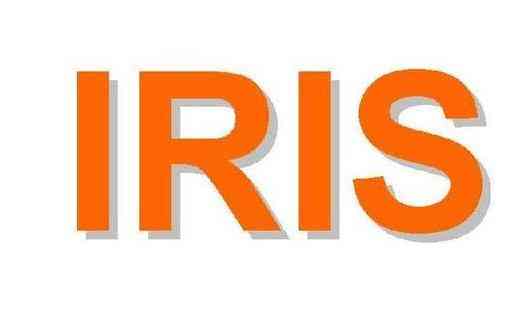|
INTERNATIONAL ISO
STANDARD 80601-2-85
First edition
2021-03
Medical electrical equipment —
Part 2-85:
Particular requirements for the basic
safety and essential performance of
cerebral tissue oximeter equipment
Appareils électromédicaux —
Partie 2-85: Exigences particulières pour la sécurité de base et les
performances essentielles des oxymètres pour tissu cérébral
Reference number
©
ISO 2021
© ISO 2021
All rights reserved. Unless otherwise specified, or required in the context of its implementation, no part of this publication may
be reproduced or utilized otherwise in any form or by any means, electronic or mechanical, including photocopying, or posting
on the internet or an intranet, without prior written permission. Permission can be requested from either ISO at the address
below or ISO’s member body in the country of the requester.
ISO copyright office
CP 401 • Ch. de Blandonnet 8
CH-1214 Vernier, Geneva
Phone: +41 22 749 01 11
Email: [email protected]
Website: www.iso.org
Published in Switzerland
ii © ISO 2021 – All rights reserved
Contents Page
Foreword . vi
Introduction . vii
201.1 Scope, object and related standards . 1
201.1.1 * Scope . 1
201.1.2 Object . 2
201.1.3 Collateral standards . 2
201.1.4 Particular standards . 3
201.2 Normative references . 4
201.3 Terms and definitions . 5
201.4 General requirements . 10
201.4.3.101 * Additional requirements for essential performance . 11
201.4.102 Additional requirements for acceptance criteria . 11
201.4.103 Additional requirements for cerebral tissue oximeter equipment, parts and
accessories . 11
201.5 General requirements for testing of ME equipment . 12
201.6 Classification of ME equipment and ME systems . 12
201.7 ME equipment identification, marking and documents . 12
201.7.1.101 Information to be supplied by the manufacturer . 12
201.7.2.3 Consult accompanying documents . 12
201.7.2.9.101 IP classification . 12
201.7.2.101 Additional requirements for marking on the outside of ME equipment parts . 13
201.7.4.3 Units of measurement . 13
201.7.9.2 Instructions for use . 13
201.7.9.2.1.101 Additional general requirements. 13
201.7.9.2.2.101 Additional requirements for warnings and safety notices . 15
201.7.9.2.9.101 Additional requirements for operating instructions . 15
201.7.9.2.14.101 Additional requirements for accessories, supplementary equipment, used
material . 15
1.7.9.3.1.101 * Additional general requirements . 16
201.8 Protection against electrical hazards from ME equipment . 16
201.8.3.101 Additional requirements for classification of applied parts . 16
201.8.5.5.1.101 Defibrillation protection . 16
201.8.7.4.7.101 Additional requirements for measurement of the patient leakage current . 16
201.9 Protection against mechanical hazards of ME equipment and ME systems . 17
201.10 Protection against unwanted and excessive radiation hazards . 17
201.10.4 Lasers . 17
201.11 Protection against excessive temperatures and other hazards . 17
201.11.1.2.2 Applied parts not intended to supply heat to a patient . 17
201.11.6.5.101 * Additional requirements for ingress of water or particulate matter into
the ME equipment or ME system. 18
201.11.6.7 Sterilization of ME equipment or ME system . 18
201.11.8.101 Additional requirements for interruption of the power supply/supply mains
to ME equipment . 18
201.11.8.101.1 Technical alarm condition for power supply failure . 18
201.11.8.101.2 Settings and data storage following short interruptions or automatic
switchover . 19
201.11.8.101.3 Operation following long interruptions . 19
201.12 Accuracy of controls and instruments and protection against hazardous outputs. 19
201.12.1.101 * StO accuracy of cerebral tissue oximeter equipment . 19
201.12.1.101.1 * Specification . 19
201.12.1.101.2 * Data collection for determination of StO accuracy . 21
201.12.1.101.3 * Data analysis for determination of StO accuracy . 22
201.12.1.101.4 Characteristics of the study used for determination of StO accuracy . 23
201.12.4 Protection against hazardous output . 23
201.12.4.101 * Data update period . 23
201.12.4.102 * Signal inadequacy . 23
201.13 Hazardous situations and fault conditions for ME equipment . 24
201.13.101 Detection of probe faults and probe cable extender faults . 24
201.14 Programmable electrical medical systems (PEMS) . 24
201.15 Construction of ME equipment . 24
201.15.3.5.101 * Additional requirements for rough handling . 25
201.15.3.5.101.1 * Shock and vibration (robustness) . 25
201.15.3.5.101.2 * Shock and vibration for a transit-operable cerebral tissue oximeter
during operation . 26
201.15.101 Mode of operation. 27
201.16 ME systems. 27
201.17 Electromagnetic compatibility of ME equipment and ME systems. 27
201.101 * Cerebral tissue oximeter probes and probe cable extenders . 27
201.101.1 General . 27
201.101.2 Labelling . 28
201.102 Functional connection . 28
201.102.1 General . 28
201.102.2 * Connection to an electronic health record or integrated clinical environment . 28
201.102.3 Connection to a distributed alarm system . 28
202 Electromagnetic disturbances — Requirements and tests . 29
202.4.3.1 Configurations . 29
202.5.2.2.1 Requirements applicable to all ME equipment and ME systems . 29
202.8.1.101 Additional general requirements . 29
202.8.2 Patient physiological simulation . 29
206 Usability . 30
208 General requirements, tests and guidance for alarm systems in medical electrical
equipment and medical electrical systems. 30
208.6.1.2.101 * Additional requirements for alarm condition priority . 30
208.6.5.4.101 * Additional requirements for default alarm preset . 31
208.6.8.5.101 Additional requirements for alarm signal inactivation states, indication and
access . 31
211 Requirements for medical electrical equipment and medical electrical systems used
in the home healthcare environment . 31
212 Requirements for medical electrical equipment and medical electrical systems used
in the emergency medical services environment . 31
iv © ISO 2021 – All rights reserved
Annex C (informative) Guide to marking and labelling requirements for ME equipment and
ME systems . 32
Annex D (informative) Symbols on marking. 36
Annex AA (informative) Particular guidance and rationale . 37
Annex BB (informative) Skin temperature at the cerebral tissue oximeter probe . 48
Annex CC (informative) Determination of accuracy . 50
Annex DD (informative) Characteristics of a tissue haemoglobin phantom for the verification
of the accuracy of cerebral tissue oximeter equipment . 56
Annex EE (info
...














